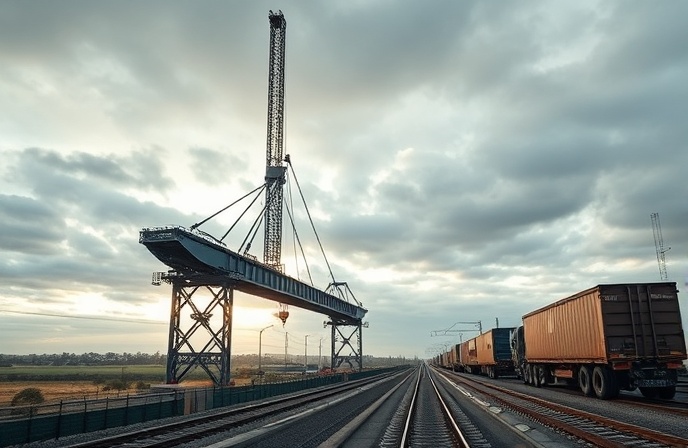EU High-Speed Rail Plan: Boosting Railway Infrastructure by 2040
The European Commission unveils an ambitious plan to triple the EU high-speed rail network by 2040, investing EUR 546 billion in vital infrastructure upgrades.

“`html
Introduction
The European Commission has announced a plan to expand the EU high-speed rail network by 2040, requiring an estimated investment of EUR 546 billion. The plan aims to triple the high-speed rail network across Europe.
Investment and Expansion Goals
The plan aims to triple the existing high-speed rail network, requiring an estimated investment of EUR 546 billion. To finalize the currently planned TEN-T high-speed rail network by 2040, an estimated EUR 345 billion will be required. The investment is expected to create employment and provide a net positive benefit to society in the range of EUR 750 billion.
Infrastructure Priorities and Objectives
The plan sets the goal of significantly reducing travel times for popular rail journeys across Europe. The plan outlines specific high-speed infrastructure priorities and emphasizes achieving high-speed connections between EU capitals and major urban centers.
Key Pillars of the Plan
The plan is structured around four pillars. The first pillar focuses on accelerating investment and harmonizing the European high-speed rail network to ensure interoperability. This involves removing cross-border bottlenecks through binding timelines set for 2027. The Commission has also proposed options for higher speeds, including speeds well above 250 km/h where economically viable. A dedicated EU financing strategy will be prepared, supported by dialogue with Member States, industry, and financial institutions. High-speed rail projects will be prioritized in a 2026 CEF call, paving the way for further investments in the EU’s next long-term budget for 2028-2034.
Further Developments and Governance
Member States are urged to assess and plan for exceeding TEN-T minimum requirements, aiming to upgrade or build new high-speed connections, including those with speeds well above 250 km/h, where economically feasible. Addressing interoperability, the plan proposes a research call in 2026 through Europe’s Rail to support the development of next-generation high-speed rolling stock. EU rules will be revised in 2026 to simplify train driver certification, and the 2026 European ERTMS Deployment Plan will be released next year. In 2027, the Commission will propose measures to ban anticompetitive scrapping of functioning and safe rolling stock and to establish transparent conditions for its resale and operation across all Member States. A proposal will be introduced in 2026 to improve cross-border rail ticketing and booking systems. The Commission will establish a scoreboard to monitor progress on high-speed rail. The mandate of ERA will also be revised next year, enabling the Agency to remove redundant national rules and issue authorizations and certifications more efficiently, thereby supporting the implementation of innovation.
Conclusion
The European Commission’s plan aims to enhance the EU’s high-speed rail network by 2040, focusing on infrastructure development, reducing travel times, and promoting a competitive rail industry.
The plan outlines specific investment strategies, infrastructure priorities, and regulatory reforms, with the goal of creating a more efficient and integrated high-speed rail network across the EU.
Company Summary
European Commission: The executive branch of the European Union, responsible for proposing legislation, implementing decisions, upholding the EU treaties, and managing the day-to-day business of the EU.
Technology
ERTMS: European Rail Traffic Management System.
“`


